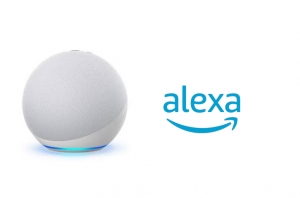A few years ago, I would’ve never imagined living in a fully automated home. But once I started dabbling in smart home technology, things escalated quickly, and before I knew it, Alexa became the brain behind my house.

From controlling lights and appliances to managing my entertainment system, Alexa has revolutionized how I live. Here’s how I transformed my home with Alexa automation and made everyday life easier, more efficient, and a little bit cooler.
How I Transformed My Home with Alexa Automation
Below are the steps on how I transformed my home with Alexa automation:
The First Step: Setting Up Alexa
The transformation started with a single Amazon Echo device. Initially, I bought it for basic things like asking the weather or playing music. But as I discovered more about Alexa’s potential, I quickly realized that it could control much more than just playlists.
Setting up Alexa was a breeze. After unboxing the Echo, I simply plugged it in, connected it to my Wi-Fi using the Alexa app, and synced it with my Amazon account. Once that was done, the real fun began—building a smart home system that would change the way I lived.
Automating the Lights: A Game-Changer
One of the first areas I tackled was lighting. I replaced regular bulbs with smart bulbs that worked with Alexa. These were simple to install and once connected, I could control all the lights in my house with a voice command or through the Alexa app.
No more fumbling for switches or worrying about leaving the lights on when I left the house. Now, all I have to say is, “Alexa, turn off the living room lights,” and they’re off. It’s even more fun when I customize commands like, “Alexa, set movie mode,” which dims the lights to the perfect level for watching films.
But beyond the cool factor, this automation added real convenience to my life. I set schedules for lights to turn on and off at specific times, which made my home more energy-efficient. Plus, when I’m out of town, I can make it seem like someone’s home by remotely controlling the lights.
Smart Thermostat: Comfort on Command
Next, I moved to the thermostat. I installed a smart thermostat that was compatible with Alexa, and this made a huge difference in terms of comfort and energy savings. Now, instead of walking over to adjust the temperature manually, I can just ask, “Alexa, set the temperature to 72 degrees,” and it happens instantly.
I also set up routines based on time and occupancy. For instance, the thermostat adjusts the temperature automatically when I leave for work and again before I get home, making sure the house is always comfortable without wasting energy. It’s like having a personal assistant who manages my climate control.
Security and Peace of Mind: Alexa to the Rescue
Home security was another area where Alexa came to the rescue. I integrated smart cameras and a smart doorbell into my system, both of which work seamlessly with Alexa. Whenever someone approaches my door, I get an instant notification, and I can ask, “Alexa, show me the front door camera,” to get a live feed on my smart display or phone.
I also connected smart locks to my front and back doors. Now, I can lock or unlock doors with my voice or the app. This has been incredibly useful when I’m in bed and realizes I forgot to lock up for the night—one quick command, and it’s done.
Alexa also plays a big role in creating the appearance that someone’s always home, even when I’m away. Using the Alexa Guard feature, I can set it to alert me if it hears sounds like glass breaking or the smoke alarm going off. It’s an extra layer of security that gives me peace of mind.
Automating Entertainment: The Fun Part
Of course, Alexa isn’t just about utility—it’s also about fun. I set up my TV, speakers, and sound system to work with Alexa, which means I can control my entire entertainment experience without lifting a finger. Whether it’s turning on the TV, adjusting the volume, or switching between streaming services, Alexa handles it all.
With a simple “Alexa, play Netflix,” my TV powers up, navigates to Netflix, and starts playing. I’ve even programmed commands like “Alexa, play music,” which triggers a whole-home audio system, filling every room with my favorite playlists.
One of the most enjoyable routines I created is for movie night. I say, “Alexa, it’s movie time,” and she dims the lights, closes the blinds, powers on the TV, and cues up the sound system. It’s like having a personal theater technician at my disposal.
Managing Appliances and Daily Tasks
Another big win came when I connected my kitchen appliances to Alexa. I now have a smart coffee maker that starts brewing with the command, “Alexa, start the coffee,” and a smart oven that preheats when I tell it to. These small touches add up, making my mornings smoother and my cooking more efficient.
I’ve also set up Alexa to help with daily reminders and tasks. Whether it’s keeping track of groceries, reminding me of appointments, or setting timers while I cook, Alexa is like a digital assistant that’s always on hand. I can add items to my shopping list by saying, “Alexa, add eggs to the grocery list,” and she takes care of it.
One feature I use constantly is Alexa’s ability to control power outlets. I’ve connected several appliances, like my desk fan and bedside lamp, to smart plugs. Now I can turn these devices on and off simply by asking Alexa, which adds another layer of automation to my day-to-day routine.
Setting Up Routines: Alexa’s Real Power
What brings the automation experience to life is Alexa’s ability to create routines. Routines are custom commands that trigger multiple actions. For example, in the morning, I say, “Alexa, good morning,” and she’ll turn on the lights, start the coffee, read me the news, and adjust the thermostat to my preferred temperature—all in one go.
At night, I have a routine that shuts everything down: “Alexa, good night.” This command turns off all the lights, locks the doors, adjusts the thermostat, and even plays relaxing music as I fall asleep. Routines let me automate whole sequences of events, making everyday tasks feel effortless.
Importance of Alexa Home Automation
Convenience and Ease of Use
Alexa allows you to control smart home devices through voice commands, eliminating the need for multiple remotes or apps. You can turn off lights, adjust the thermostat, or play music without moving from your location, making daily tasks easier and more efficient.
Energy Efficiency
With Alexa’s home automation, you can set schedules and routines for devices like lights and thermostats. For example, you can program lights to turn off when not needed or the thermostat to adjust automatically based on your routine, reducing energy consumption and saving money.
Improved Security
Alexa integrates with various smart home security systems, such as cameras, door locks, and alarms. You can monitor your home remotely, receive real-time alerts, and even automate security routines, like locking doors at night or turning on lights when motion is detected.
Hands-Free Control
Alexa enables hands-free operation, which is especially beneficial in situations where you cannot physically interact with devices, such as cooking, holding something, or being in another room. This feature is also helpful for individuals with mobility issues.
Customization and Personalization
Alexa allows you to create custom routines tailored to your specific needs. For example, you can set a “Good Morning” routine that turns on lights, reads the news, and starts the coffee maker simultaneously. This personalizes your home experience and streamlines your day.
Challenges of Alexa Home Automation
Privacy Concerns
Since Alexa listens for wake words to respond, there are concerns about potential eavesdropping or data collection. Although Amazon has privacy controls, users worry about the possibility of unauthorized access to their conversations or smart devices.
Compatibility Issues
Not all smart devices are compatible with Alexa, which can limit your ability to automate everything in your home. You might need multiple hubs or apps for devices that Alexa doesn’t support, complicating the automation process.
Dependence on Internet Connectivity
Alexa’s functionality heavily relies on a stable internet connection. If the internet is slow or goes down, Alexa will not be able to control your smart home devices, which could render your home automation ineffective.
Learning Curve
Although Alexa is user-friendly, setting up and configuring home automation for the first time can be challenging, especially for non-tech-savvy individuals. It may take time to learn how to link devices, create routines, and troubleshoot issues.
Limited Natural Language Understanding
While Alexa’s voice recognition technology is advanced, it may not always understand commands correctly, especially with different accents, unclear phrasing, or background noise. This can lead to frustration when devices do not respond as expected.
Conclusion
Transforming my home with Alexa automation has been a game-changer. It’s made my life more convenient, efficient, and—let’s be honest—a bit more fun. From controlling lights and temperature to managing security and entertainment, Alexa has become the hub of my smart home.
The best part is that it’s only getting better. With new devices and integrations being added all the time, the possibilities for automation are endless. If you’re thinking about making your home smarter, Alexa is a great place to start. Trust me, once you experience the magic of voice-activated automation, there’s no going back.
ALSO CHECK:
Best Earbuds Brands to Shop From in USA
The Hisense U7 Series Review: Merging Technology with Design
30 Days with the Samsung Galaxy Watch Ultra: My Unfiltered Experience
